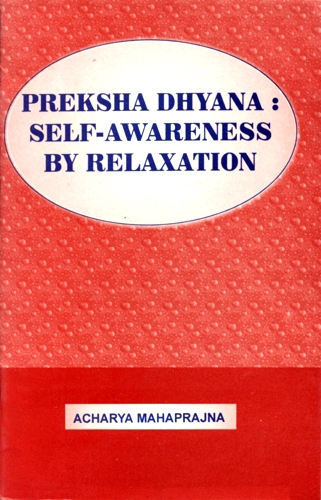Tension in Daily Life
We live in the age of tensions and because we are confronted with more and more situations that produce stress, increasing numbers of people at younger ages are suffering from hypertension which results in high blood-pressures, heart-attacks and premature deaths. Everywhere we are cursed with colour war, communal strife and religious riots; politicians endeavour to make our life miserable with missionery zeal; atomic weapons continue to pile up threatening the very existence of humanity, but our most prenicious anxiety involves more common problems of daily life such as the daily commute in a congested city, rising cost of living, unabating shortages of daily necessities, polluted air and water. These and many other insoluble difficulties appear to have been built into our daily life.
Scientific and technological development has brought supersonic speeds for travelling. It has consequently created conditions which make unprecedented demands on our physiological organs as well as mental equipments. The fast rate of living needs trmendous expense of energy and results in sapping of vitality. Overacting needs higher rate of respiration and the enrgy metabolism is overloaded.
The existence of mental stress as a part of modern living has been universally accepted. Frequent stressful situations affect us, not only psychologically, but also undermine our physical health.
If one can learn to stop all muscular activity and breathe slowly and scientifically, he can save himself from many difficulties. In this age of overactivity, conscious relaxation is a panacea for many maladies and problems. Overactivity and unbroken restlessness produce mental upsets and somatic diseases. The only safe remedy is conscious relaxation and deliberate suspension of all bodily movements.
Remedy for Psychosomatic Diseases
Today eminent doctors—specialists and general practitioners alike—have realised that relaxation is a powerful tool both for healing and maintaining good health. Irrefutable scientific proofs, now available, show that consciously achieved total relaxation can cure and prevent any number of diseases which are caused by tension and stress. Hypertension (chronic high blood-pressure), heart-attacks, nervous break-downs, peptic ulcers are all caused by mental tensions.
Kãyotsarg—Relaxation literally means 'abandonment of the body coupled with high degree of conscious awareness.' In practice, it is conscious suspension of all gross movements of the body i-esulting in negligible nerve current, demagnetisation and total relaxation of the skeletal muscles and drastic reduction of metabolic activities. This physical condition results in relieving mental tensions also. Muscular relaxation is always the first step to health and its importance cannot be overemphasized.
Precondition of Meditation
Kãyotsarg is an esential pre-requisite for all types of meditation. Meditation is a deliberate mental exercise for steadying and concentrating the mind either in perception or thought. But before the mind can be steadied, the body has to be kept absolutely still and motionless, and this can only be done by the release of tensions by relaxation.
So long as there is mental tension and the nerves are taut and highly strung up, how can one expect to perform meditation?
Tension is a fit condition for agitation, restlessness and evil thoughts. Seeds of mental restlessness are sown in the fertile land of tension and here they germinate, flower and bear fruits. It is, therefore, essential to remove tension. Kãyotsarg does just this—removes mental tension, nervous tension and emotional tension.
Apart from meditation, Kãyotsarg may be practised daily. Stressful situations ar a part of modern life-style and occur regularly. The response of the body to a stressful situation is the triggering of the 'flight or fight' mechanism resulting in high-blood-pressure etc. But one can neither fight nor run away from the common problems of the modern life. Modern life-styles are most unlikely to change for the better. To avoid more injurios effects of daily stress daily practice of relaxation is essential. If one learns and practises systematic relaxation every day, he would remain relaxed, calm and unperturbed in any situation. Physically, it is more restuful than sleep, and is the most harmless and direct antidote to psychosomatic maladies resulting from tension. Spiritually, in this process,the lifeless body is cast off, while the consciousness soars upwards freed from and outside its material shell.
Kãyotsarg means perfectly motionless state of the body. Meditation is not merely steadiness of mind. Most yogacharyas and learned philosophers consider only mental steadiness and concentration as meditation. But the Jains prescribe threefold steadiness—physical, vocal and mental. Just as steadiness of mind is meditation, so is the steadiness of the body. Maintaining a motionless state of the body is physical meditation and is an essential base and prerequisite of all other meditational exercises. As long as there is any physical movement, meditation is out of question. Steadiness of mind requires steadiness of breath and the latter is acquired only with physical immobility. Hence the most important element of the basic meditational pre-requisite is the physical immobility. Kãyotsarg is motionless state of the body.
Mental concentration follows physical motionlessness. A practitioner must first learn the technique of relaxation. One who has mastered this technique, would be able to achieve mental steadiness in due course. Relaxation should be total, i.e. the whole body is completely relaxed and free from tension, ahd there is no stiffness anywhere in the body. All skeletal muscles are relaxed and demagnetized. Muscular tension and fatigue result from stiffness. This, in fact, is the first lesson. For an average person it is very important to master the technique of relaxation.
Auto-suggestion is the basic principle of the technique of relaxation. In practice, the body is mentally divided into small parts and each part is relaxed, in turn, by auto-suggestion until the entire body is free from tension. It should be noted that this technique is not hypmotism. In hypnotism, suggestions of another person are accepted subconsciously and the process expends great deal of vital energy both from the hypnotist and his subject. Kãyotsarg is not hypnotism and there is no loss of vital energy.
 Acharya Mahaprajna
Acharya Mahaprajna

